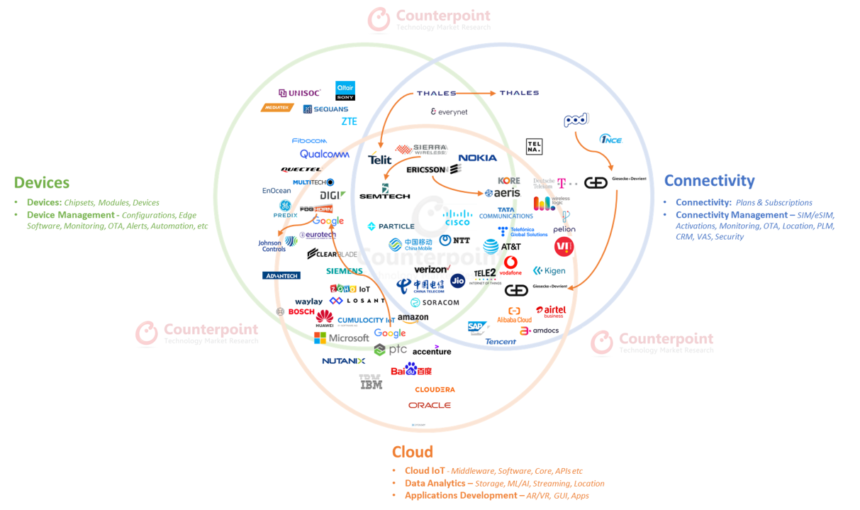The merging of IoT in cloud computing has changed the digital agenda, altering how processing, analysis, and data exploitation occur in numerous sectors. Cloud computing can process and handle the iota of data generated by multiple devices. This, therefore, promotes excellent operational excellence and innovation. It will explore the deep influences of IoT on the cloud computing landscape and illustrate its role, benefits, and emerging challenges.
Key Statistics
Industries are finding an increased appetite for IoT solutions, with an expected 41 billion devices continuously feeding data into the cloud in 2027. Trends indicate increased reliance on cloud infrastructure: It is expected to hit 79 zettabytes by 2025. Figures reveal an increased symbiosis of IoT devices and cloud computing infrastructures, emphasizing cloud solutions’ critical role in fully exploiting IoT.
Role of IoT in Cloud Computing
IoT devices collect data that must be stored, analyzed, and acted upon. They are the eyes and ears of many environments, from industrial to residential settings.
Scalability and Flexibility Improvement
Cloud computing’s elasticity allows scaling up or down regarding required resources based on data flow from IoT devices. This scalability feature is crucial for businesses subjected to changing workloads, leading them to pay only for resources consumed. With such flexibility, cloud solutions for IoT in cloud computing enable business adaptation quickly to market demands without significant investments in the maintenance of physical infrastructure.
Enabling Real-time Processing
Data processing is allowed due to the integration of cloud computing with IoT. This is critical in various sectors, particularly in healthcare, where the record of continuous data from patients taken by monitoring devices helps predict and alert health abnormalities. IoT sensors can predict equipment failures before they happen, reducing company downtime and maintenance costs.
Improving Security Measures
With the proliferation of IoT devices, security is a prime concern. Cloud IoT platforms contribute significantly to security by setting up sophisticated encryption protocols, providing regular security updates, and maintaining holistic compliance measures to prevent breaches of sensitive information. They also offer robust data redundancy options, practical disaster recovery, integrity, and availability even with hardware failure or cyber threats.
Cost Efficiency and Investment Return
Other cost-effective models preferred to manage IoT operations are IaaS and PaaS. These models save capital expenditure on setting up and maintaining the data centers and instead offer a pay-as-you-go model to suit business needs. This reduces initial investment costs and optimizes operational expenditure with greater returns on investment, highlighting the role of IoT in cloud management.
Locking Down the Details of Cloud IoT Solutions
Cloud IoT solutions constitute a collection of services for managing enormous IoT applications. They ensure that the applications work efficiently and seamlessly.
Platform as a Service (PaaS)
It offers a full cloud development environment comprising hardware, software, and hosting infrastructure. IoT developers can use PaaS to develop, test, deploy, manage, and upgrade all their IoT applications in a single, centralized platform, accelerating development cycles and time to market.
Infrastructure as a Service (IaaS)
IaaS is a virtualized computing resource accessed via the internet. The IaaS model offers cloud computing solutions with a pay-as-you-use strategy for storage, network, and virtual servers. This platform provides flexibility, as for IoT applications, rapid scaling up or down in the device data volume and connectivity requirements may be needed.
Data Analytics and Machine Learning Integration
Data analytics and machine learning models running on cloud services serve to transform raw data from IoT devices into valuable, actionable insights. IoT in cloud computing provides powerful tools, more than mere reporting statistics, that utilize complex algorithms to reveal underlying patterns, predict trends, and streamline automated decision-making for various constituencies. This capability is instrumental in strategic planning and operational improvement across multiple industries.
For instance, machine learning algorithms can understand consumer behavior and retail inventory levels to optimize stock orders and layout plans. Likewise, in smart cities, data analytics may help manage traffic and energy distribution so that resources can be used effectively. The combined use of IoT, cloud computing, and advanced analytics gives rise to the backbone of modern data-driven strategies that improve mundane daily processes and contribute a lot to longer-term business sustainability and innovation.
Edge Computing
Including edge computing in this model goes a long way toward addressing the latency issues inherent in the traditional cloud architecture because data can be processed close to the IoT device. This reduces the round trip, making the IoT systems fast and responsive while saving bandwidth by reducing the data that must be sent to far-flung cloud servers. As an IoT application development company, we understand the importance of these advancements in enhancing overall system performance.
Along with these benefits, processing data at the edge gives additional reliability to applications in IoT due to their unsteady network connections. It provides continuous operation and real-time decision-making, maintaining critical functions even if connectivity is disrupted. This localized approach can greatly improve operational efficiency and provide a robust solution for industries that require instantaneous data analysis and action.
IoT for Increased Connectivity and Automation
The IoT devices are integrated into a cloud, providing better connectivity and automation in some domains. This integration helps create smart ecosystems where devices can interact with each other and the application running on a cloud, thus increasing the degree of automation by connecting things. IoT in cloud computing enhances these interactions and contributes to more efficient data management and processing.
Automation based on IoT and cloud computing greatly improves efficiency in automated supply chains, smart home systems, and public services with less human intervention and minimal errors.
Overcoming the Challenges and Enabling IoT Delivery
Although IoT product development services, IoT, and cloud computing offer several benefits, they also come with risks like data privacy, network dependency, and integration complexities. Therefore, it is extremely important to find ways to overcome all these risks associated with the deployment of IoT.
The best strategies to mitigate this risk associated with IoT deployment include hybrid cloud models, stronger cybersecurity measures, and compliance with international data protection regulations.
Conclusion
IoT with cloud computing offers one of the fastest-evolving technological innovations, fostering efficiency and innovation in most sectors of the economy. As numerous devices become increasingly connected and gather data, cloud computing is critical for comprehensive, scalable, and secure IoT solutions.
FAQ
- What are the primary benefits of combining IoT with cloud computing?
The primary benefits of integrating advanced technologies into operations include enhanced scalability, cost efficiency, and improved data processing capabilities. Additionally, these technologies help strengthen security measures, ensuring a more robust and resilient operational framework.
- Can IoT work without cloud computing?
While IoT can operate independently of cloud computing, leveraging cloud platforms significantly enhances its capabilities. Cloud infrastructure offers scalability, enables advanced analytics, and strengthens security measures, thereby amplifying the efficiency and potential of IoT systems in managing and analyzing vast amounts of data generated.
- What are the future trends in IoT and cloud computing?
Future trends include increased AI and machine learning adoption for advanced data analytics, greater emphasis on edge computing, and more stringent security protocols to safeguard IoT data.


